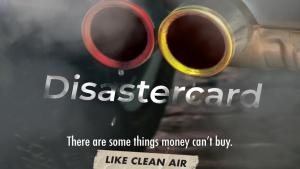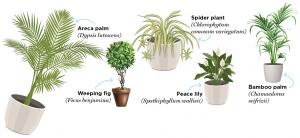
We know money can’t buy happiness. But it can buy something else — just look at Delhi this winter! The city’s 'Disastercard' is swiping us straight into smog. Industrial and vehicular emissions, low temperatures, stagnant winds, stubble burning, and festive firecrackers are turning the air toxic. And the hidden charges? Far beyond coughing or wheezing, Delhi’s air is harming almost every organ — raising heart disease, worsening asthma, affecting mental health, complicating pregnancies, and stunting lung growth in children. So, beware of this Disastercard, dear Young Environmentalists. Its cost is …

Against hidden indoor toxins are mighty air-cleaning plants—explore how nature helps us breathe better and why every home needs these green helpers.

How do people get to work in India? People use all kinds of ways: walking, cycling, riding scooters and mopeds, driving cars and jeeps, taking autos, buses, taxis, metros, trains, and even tempos! Some people even work from home. The way people travel differs a lot between cities and villages. Here’s a surprise from The State of India in Figures 2025, released by the Centre for Science and Environment: More people walk to work in cities than in villages! In cities, 2.6 crore people walk to work, while in villages, it’s 1.8 crore.

35 Indian cities have recently been listed among the 50 most polluted cities in the world. What's worse, 16 of these cities received nearly Rs 1,000 crore over the past eight years to tackle air pollution. This disturbing finding has placed India’s National Clean Air Programme (NCAP) under intense scrutiny. NCAP is the costliest air pollution control programme ever taken up in India, and one of the biggest globally. But it appears to be non-existent in 19 of the Indian cities that are part of the ‘most polluted’ top 50 list.

Toxic air is seeping into classrooms! From smoky school buses to burning trash, air pollution is harming students. Discover a teacher’s plea for cleaner air and healthier schools.

Breathe Easy This Winter: Simple Solutions to Keep Indoor Air Fresh and Healthy Amid Hidden Pollution Sources

Battling Smog: A Teen’s Perspective on Air Pollution, Its Impact, and the Urgent Need for Clean Air Solutions

Congratulations, PollutionBusters! Grab Your Participation Certificates here.

As per the latest State of India’s Environment 2024, published by the Centre for Science and Environment, New Delhi, air pollution is one of the biggest reasons for child mortality in India. From womb to birth to adolescence, murky air with heavy doses of PM2.5 and noxious gases cripple generations. Doctors say that Delhi and many cities in India are witnessing a spike in cases of children and non-smoking adults with black deposits in lungs. These deposits cannot be removed and damage the lungs. It is a criminal oversight to ignore this health emergency.

